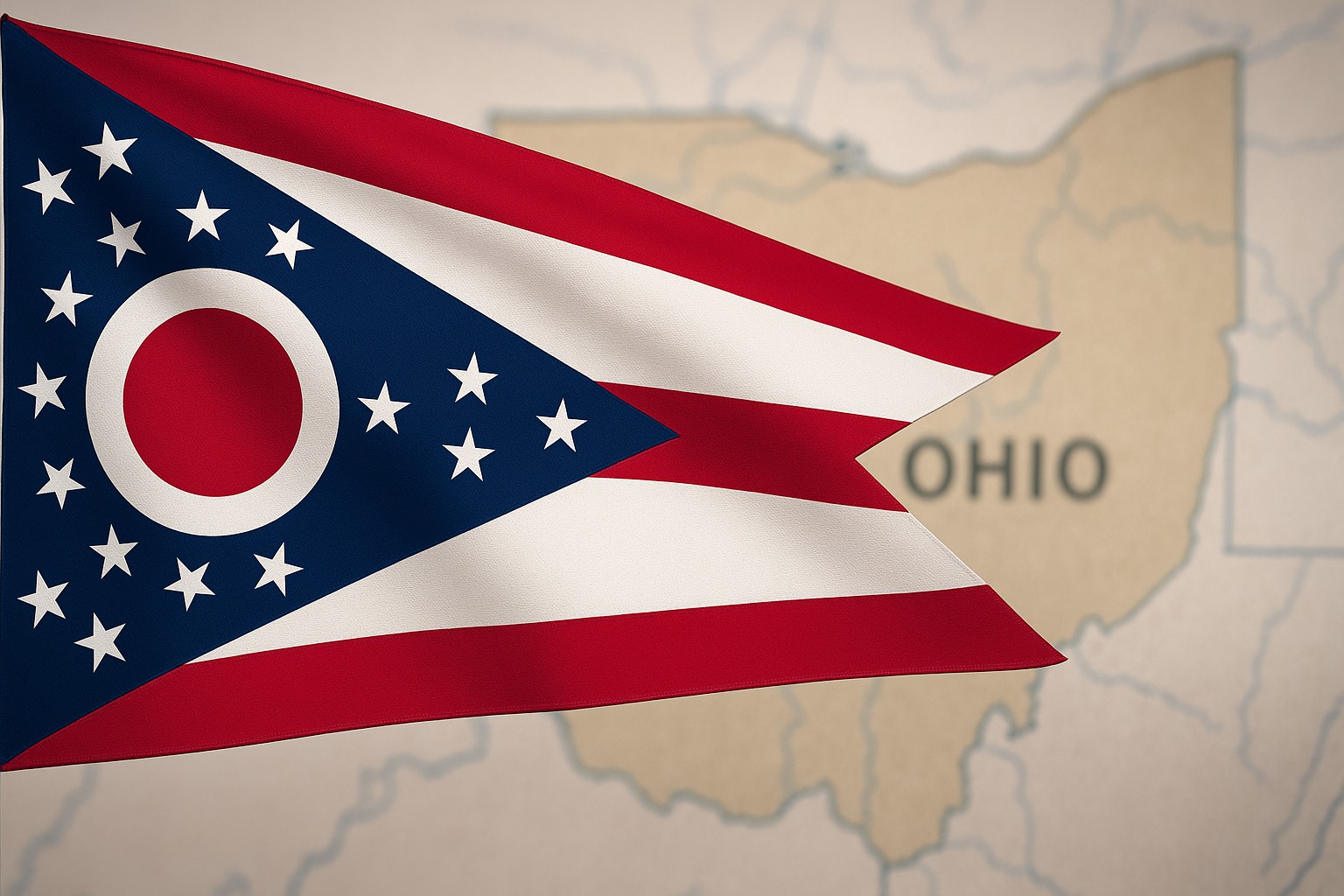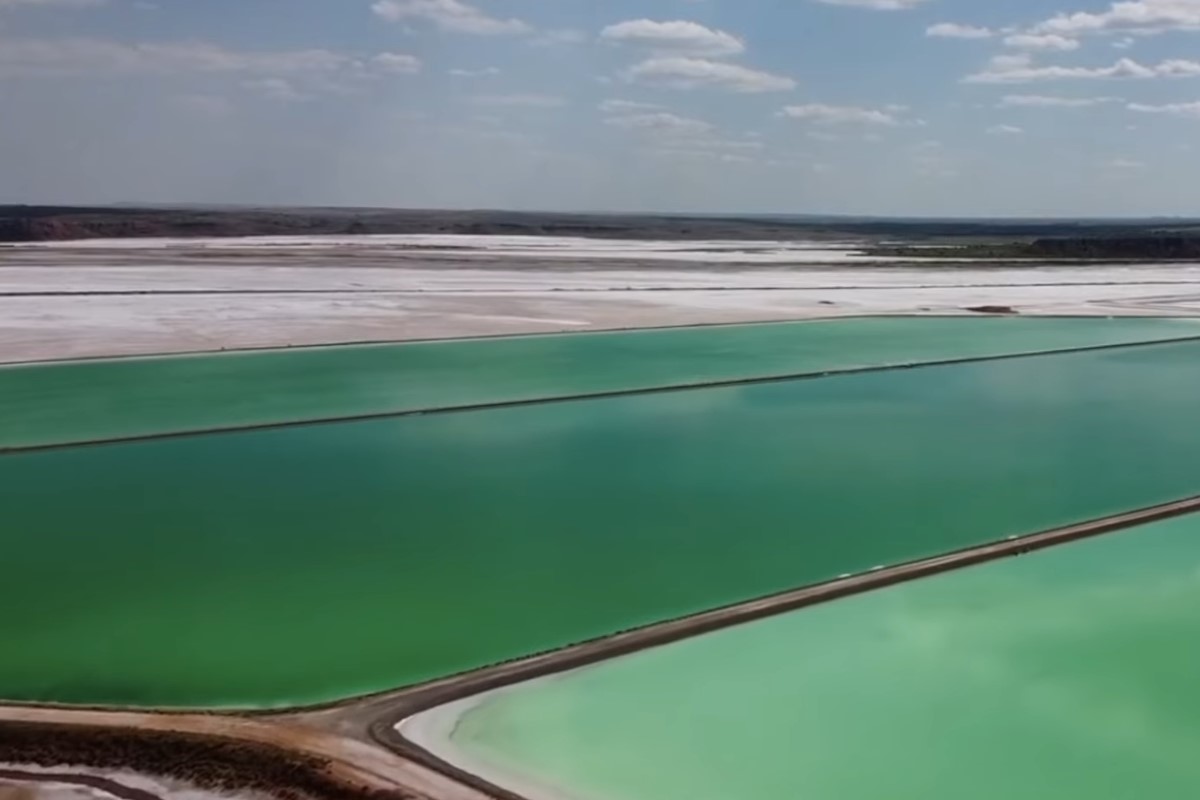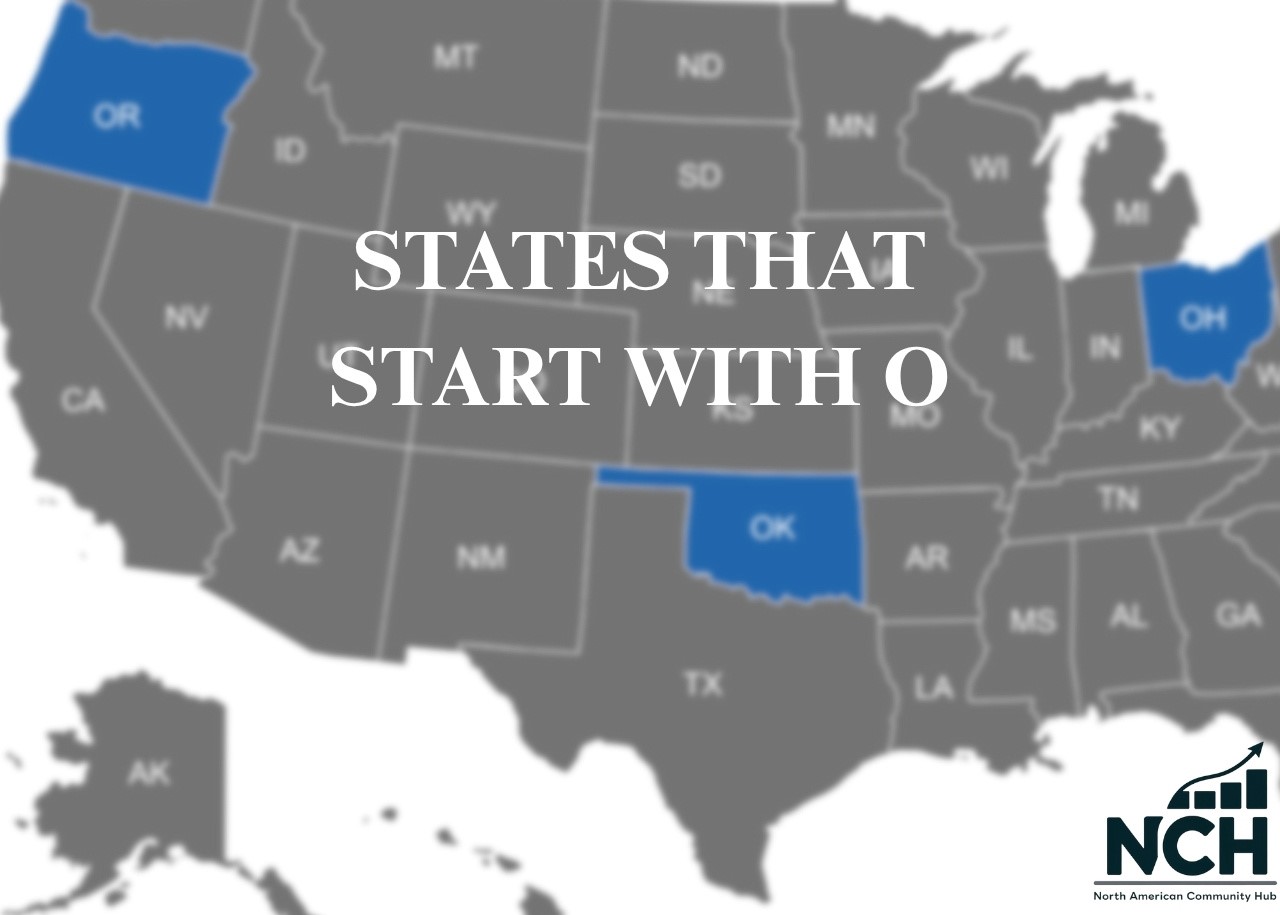After covering the US states that start with N, the letter O follows next.
There are three US states that start with O.
Keep reading to see what truly sets Ohio, Oklahoma, and Oregon apart.
Ohio

Ohio stands in the center of the Midwest, where steel once burned, trains once thundered, and towns grew from raw ambition.
It connects the Great Lakes to the Ohio River, a route that shaped the country’s trade, industry, and culture.
Every city, field, and riverbank in the state holds a trace of invention and endurance that still defines it today.
History
Ohio entered the Union in 1803 as the 17th state. Long before statehood, the land held powerful Native nations, including the Shawnee and Miami.
After the American Revolution, settlers moved west through the Northwest Territory, drawn by fertile soil and open land.
- 1787: Northwest Ordinance created the territory that became Ohio.
- 1803: Official admission to the Union.
- Mid-1800s: The rise of canal and rail transport turned cities into trade hubs.
- Early 1900s: Steel, rubber, and manufacturing transformed the economy.
Eight US presidents were born in Ohio, earning it the nickname “Mother of Presidents.”
Geography
The land stretches between Lake Erie in the north and the Ohio River in the south. Rolling plains fill the west, while low hills rise in the east.
Major cities like Cleveland, Columbus, and Cincinnati sit on routes shaped by both water and work.
Main Attractions
- Lake Erie shoreline with islands and harbors.
- Cuyahoga Valley National Park is one of the few national parks near major cities.
- Hocking Hills with caves, cliffs, and waterfalls.
- The Ohio River forms the southern edge, linking the Midwest to the South.
Surprising Facts
View this post on Instagram
- The Wright brothers built the first airplane in Dayton.
- The first professional baseball team, the Cincinnati Red Stockings, was formed in 1869.
- The state flag is the only non-rectangular flag in the United States.
- Akron became known as the “Rubber Capital of the World.”
- Cedar Point in Sandusky is one of the oldest and largest amusement parks in the world.
Oklahoma
Oklahoma stands on wide plains where sky and soil meet in constant motion. Storms, dust, and open space shaped its people into builders who learned to rise after every fall.
The state carries deep roots in Native heritage, frontier struggle, and raw endurance that forged a powerful identity across time.
History
Oklahoma became the 46th state in 1907, but its story reaches far back through centuries of displacement and resilience.
Dozens of Native nations, including the Cherokee, Choctaw, Chickasaw, Creek, and Seminole, were forced into the region through the Trail of Tears during the 1830s.
Oil discoveries in the early 1900s turned empty land into booming towns almost overnight. Tulsa and Oklahoma City grew fast, fed by industry and ambition. The Dust Bowl of the 1930s tested everything built before it, but recovery came through grit and innovation.
- 1830s: Forced relocation of Native nations through the Trail of Tears.
- 1889: Land Run opened two million acres to settlers.
- 1907: Official statehood granted.
- 1930s: The Dust Bowl devastated farms and forced migration west.
- 1995: The Oklahoma City bombing became one of the darkest chapters in modern history.
Geography

Oklahoma covers a landscape shaped by contrast. The western region forms part of the Great Plains, stretching north into Kansas and south into Texas. That area includes the High Plains, the Red Bed Plains, and the striking Great Salt Plains near Jet.
The Great Salt Plains appear like a mirror of white earth, created by the remains of an ancient sea. Every spring, the surface reveals rare hourglass-shaped selenite crystals found almost nowhere else on Earth.
Tornadoes sweep across the open land each spring, earning it a place in Tornado Alley.
Main Natural and Cultural Sites
- Wichita Mountains Wildlife Refuge with bison herds and granite peaks.
- Turner Falls is the tallest waterfall in the state.
- Lake Texoma, one of the largest reservoirs in the southern United States.
- Route 66 crosses through Oklahoma, lined with classic towns and roadside history.
- Tallgrass Prairie Preserve, one of the last remaining ecosystems of its kind.
Surprising Facts
View this post on Instagram
- Oklahoma has the most man-made lakes in the United States.
- The state capital has active oil wells on its grounds.
- Oklahoma City is larger in land area than Los Angeles.
- The state’s name comes from Choctaw words meaning “red people.”
- The National Cowboy and Western Heritage Museum stands as a tribute to frontier history.
- There is a weird road in Oklahoma where cars roll uphill
Oregon
Oregon stretches from high desert to rugged coast, a land carved by rivers, forests, and volcanoes. Every mile holds a sense of scale that few states can match.
Mountains cut across its heart, waterfalls drop through evergreen cliffs, and the Pacific marks its edge with endless force.
The land shaped independence and imagination into a way of life that still defines the state.
History
Oregon entered the Union in 1859 as the 33rd state. Long before settlers arrived, tribes such as the Chinook, Klamath, and Nez Perce lived across its valleys and rivers.
The Oregon Trail brought thousands west in the 1840s, drawn by promise and open land.
Conflicts between settlers and Native tribes marked the early years, but the growing trade in timber and fishing soon built towns along the Columbia River and the Pacific Coast.
By the 20th century, Portland became a hub for shipping, industry, and later, culture and design.
- 1805: Lewis and Clark Expedition reached the Pacific at Fort Clatsop.
- 1843: Provisional government formed at Champoeg.
- 1848: Oregon Territory created.
- 1859: Official statehood granted.
- 1905: Portland hosted the Lewis and Clark Centennial Exposition.
Geography
Oregon divides neatly into contrasts. The Cascade Range runs north to south, splitting the state between the green, rainy west and the dry, open east.
The Columbia River cuts a deep gorge, while Mount Hood rises as a symbol seen for miles in every direction.
Most Popular Tourist Attractions
@alexismakaiii i’ve explored a lot of places & the oregon coast might be my new fav 🥹🥲 #pnw #oregon #oregoncoast #campin #summer #beach ♬ Say You Love Me – Fleetwood Mac
- Crater Lake National Park, the deepest lake in the United States.
- Mount Hood, an active stratovolcano and the state’s highest peak.
- Multnomah Falls, one of the most visited waterfalls in the country.
- Columbia River Gorge, famous for windsurfing and scenic cliffs.
- Oregon Coast, a continuous stretch of public shoreline with lighthouses and dunes.
Surprising Facts
View this post on Instagram
- Oregon has no state sales tax.
- Crater Lake formed inside the collapsed volcano Mount Mazama about 7,700 years ago.
- Nike began in Beaverton as Blue Ribbon Sports in 1964.
- The state flag has different designs on each side, the only one of its kind in the United States.
- Portland has more breweries per capita than any city in the world.
The Bottom Line
Ohio drives forward through industry and invention. Oklahoma stands on endurance built across open plains. Oregon carries a spirit shaped by rivers, forests, and ocean wind.
Together, they show how work, land, and history keep shaping the story of the United States.
Next in the series are US states that start with P.



